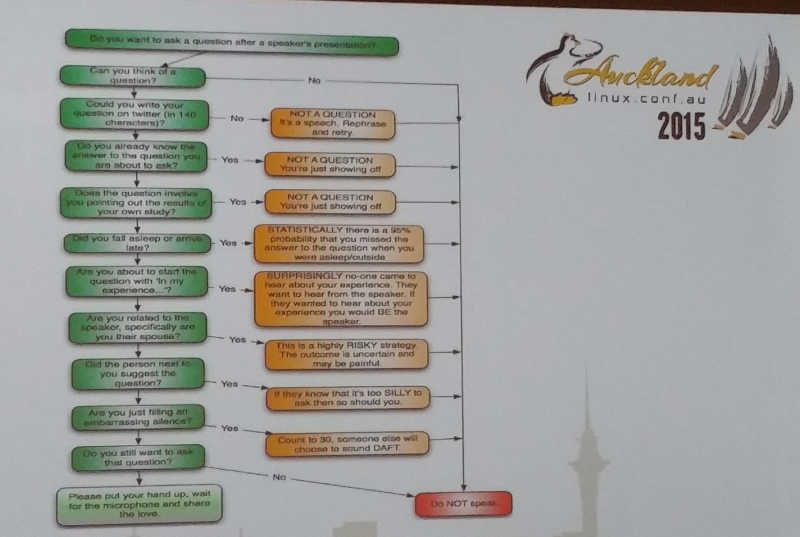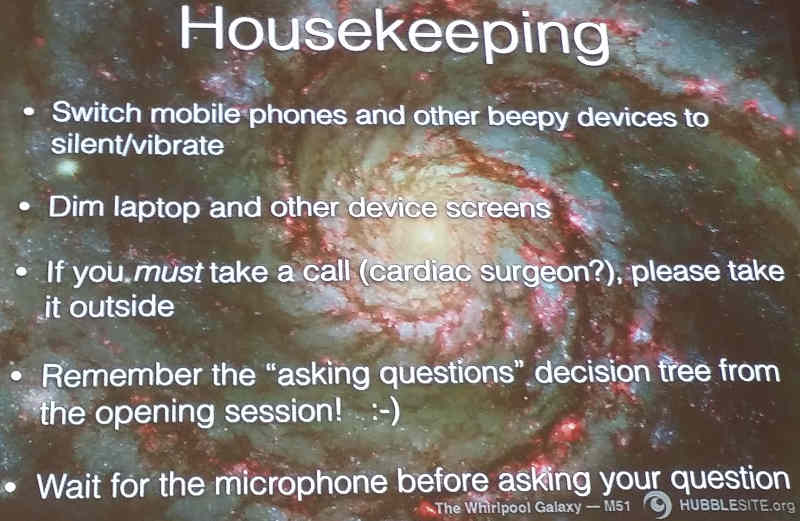Xperia X10
My first Android device was The Sony Ericsson Xperia X10i [1]. One of the reasons I chose it was for the large 4″ screen, nowadays the desirable phones (the ones that are marketed as premium products) are all bigger than that (the Galaxy S6 is 5.1″) and even the slightly less expensive phones are bigger. At the moment Aldi is advertising an Android phone with a 4.5″ screen for $129. But at the time there was nothing better in the price range that I was willing to pay.
I devoted a lot of my first review to the default apps for SMS and Email. Shortly after that I realised that the default email app is never going to be adequate (I now use K9 mail) and the SMS app is barely adequate (but I mostly use instant messaging). I’ve got used to the fact that most apps that ship with an Android device are worthless, the camera app and the app to make calls are the only built in apps I regularly use nowadays.
In the bug list from my first review the major issue was lack of Wifi tethering which was fixed by an update to Android 2.3. Unfortunately Android 2.3 ran significantly more slowly which decreased the utility of the phone.
The construction of the phone is very good. Over the last 2 years the 2 Xperia X10 phones I own have been on loan to various relatives, many of whom aren’t really into technology and can’t be expected to take good care of things. But they have not failed in any way. Apart from buying new batteries there has been no hardware failure in either phone. While 2 is a small sample size I haven’t see any other Android device last nearly as long without problems. Unfortunately I have no reason to believe that Sony has continued to design devices as well.
The Xperia X10 phones crash more often than most Android phones with spontaneous reboots being a daily occurrence. While that is worse than any other Android device I’ve used it’s not much worse.
My second review of the Xperia X10 had a section about ways of reducing battery use [2]. Wow, I’d forgotten how much that sucked! When I was last using the Xperia X10 the Life360 app that my wife and I use to track each other was taking 15% of the battery, on more recent phones the same app takes about 2%. The design of modern phones seems to be significantly more energy efficient for background tasks and the larger brighter displays use more energy instead.
My father is using one of the Xperia phones now, when I give him a better phone to replace it I will have both as emergency Wifi access points. They aren’t useful for much else nowadays.
Samsung Galaxy S
In my first review of the Galaxy S I criticised it for being thin, oddly shaped, and slippery [3]. After using it for a while I found the shape convenient as I could easily determine the bottom of the phone in my pocket and hold it the right way up before looking at it. This is a good feature for a phone that’s small enough to rotate in my pocket – the Samsung Galaxy Note series of phones is large enough to not rotate in a pocket. In retrospect I think that being slippery isn’t a big deal as almost everyone buys a phone case anyway. But it would still be better for use on a desk if the bulge was at the top.
I wrote about my Galaxy S failing [4]. Two of my relatives had problems with those phones too. Including a warranty replacement I’ve seen 4 of those phones in use and only one worked reliably. The one that worked reliably is now being used by my mother, it’s considerably faster than the Xperia X10 because it has more RAM and will probably remain in regular use until it breaks.
CyanogenMod
I tried using CyanogenMod [5]. The phone became defective 9 months later so even though CyanogenMod is great I don’t think I got good value for the amount of time spent installing it. I haven’t tried replacing the OS of an Android phone since then.
I really wish that they would start manufacturing phones that can have the OS replaced as easily as a PC.
Samsung Galaxy S3 and Wireless Charging
The Galaxy S3 was the first phone I owned which competes with phones that are currently on sale [6]. A relative bought one at the same time as me and her phone is running well with no problems. But my S3 had some damage to it’s USB port which means that the vast majority of USB cables don’t charge it (only Samsung cables can be expected to work).
After I bought the S3 I bought a Qi wireless phone charging device [7]. One of the reasons for buying that is so if a phone gets a broken USB port then I can still use it. It’s ironic that the one phone that had a damaged USB port also failed to work correctly with the Qi card installed.
The Qi charger is gathering dust.
One significant benefit of the S3 (and most Samsung phones) is that it has a SD socket. I installed a 32G SD card in the S3 and now one of my relatives is happily using it as a media player.
Nexus 4
I bought a Nexus 4 [8] for my wife as she needed a better phone but didn’t feel like paying for a Galaxy S3. The Nexus 4 is a nice phone in many ways but the lack of storage is a serious problem. At the moment I’m only keeping it to use with Google Cardboard, I will lend it to my parents soon.
In retrospect I made a mistake buying the Nexus 4. If I had spent a little more money on another Galaxy S3 then I would have had a phone with a longer usage life as well as being able to swap accessories with my wife.
The Nexus 4 seems reasonably solid, the back of the case (which is glass) broke on mine after a significant impact but the phone continues to work well. That’s a tribute to the construction of the phone and also the Ringke Fusion case [9].
Generally the Nexus 4 is a good phone so I don’t regret buying it. I just think that the Galaxy S3 was a better choice.
Galaxy Note 2
I got a Samsung Galaxy Note 2 in mid 2013 [10]. In retrospect it was a mistake to buy the Galaxy S3, the Note series is better suited to my use. If I had known how good it is to have a larger phone I’d have bought the original Galaxy Note when it was first released.
Generally everything is good about the Note 2. While it only has 16G of storage (which isn’t much by today’s standards) it has an SD socket to allow expansion. It’s currently being used by a relative as a small tablet. With a 32G SD card it can fit a lot of movies.
Bluetooth Speakers
I received Bluetooth speakers in late 2013 [11]. I was very impressed by them but ended up not using them for a while. After they gathered dust for about a year I started using them again recently. While nothing has changed regarding my review of the Hive speakers (which I still like a lot) it seems that my need for such things isn’t as great as I thought. One thing that made me start using the Bluetooth speakers again is that my phone case blocks the sound from my latest phone and makes it worse than phone sound usually is.
I bought Bluetooth speakers for some relatives as presents, the relatives seemed to appreciate them but I wonder how much they actually use them.
Nexus 5
The Nexus 5 [12] is a nice phone. When I first reviewed it there were serious problems with overheating when playing Ingress. I haven’t noticed such problems recently so I think that an update to Android might have made it more energy efficient. In that review I was very impressed by the FullHD screen and it made me want a Note 3, at the time I planned to get a Note 3 in the second half of 2014 (which I did).
Galaxy Note 3
Almost a year ago I bought the Samsung Galaxy Note 3 [13]. I’m quite happy with it at the moment but I don’t have enough data for a long term review of it. The only thing to note so far is that in my first review I was unhappy with the USB 3 socket as that made it more difficult to connect a USB cable in the dark. I’ve got used to the socket and I can now reliably plug it in at night with ease.
I wrote about Rivers jeans being the only brand that can fit a Samsung Galaxy Note series phone in the pocket [14]. The pockets of my jeans have just started wearing out and I think that it’s partly due to the fact that I bought a Armourdillo Hybrid case [15] for my Note 3. I’ve had the jeans for over 3 years with no noticable wear apart from the pockets starting to wear out after 10 months of using the Armourdillo case.
I don’t think that the Armourdillo case is bad, but the fact that it has deep grooves and hard plastic causes it to rub more on material when I take the phone out of my pocket. As I check my phone very frequently this causes some serious wear. This isn’t necessarily a problem given that a phone costs 20* more than a pair of jeans, if the case was actually needed to save the phone then it would be worth having some jeans wear out. But I don’t think I need more protection than a gel case offers.
Another problem is that the Armourdillo case is very difficult to remove. This isn’t a problem if you don’t need access to your phone, IE if you use a phone like the Nexus 5 that doesn’t permit changing batteries or SD cards. But if you need to change batteries, SD cards, etc then it’s really annoying. My wife seems quite happy with her Armoudillo case but I don’t think it was a good choice for me. I’m considering abandoning it and getting one of the cheap gel cases.
The sound on the Note 3 is awful. I don’t know how much of that is due to a limitation in the speaker and how much is due to the case. It’s quite OK for phone calls but not much good for music.
Tablets
I’m currently on my third tablet. One was too cheap and nasty so I returned it. Another was still cheap and I hardly ever used it. The third is a Galaxy Note 10 which works really well. I guess the lesson is to buy something worthwhile so you can use it. A tablet that’s slower and has less storage than a phone probably isn’t going to get used much.
Phone Longevity
I owned the Xperia X10 for 22 months before getting the Galaxy S3. As that included 9 months of using a Galaxy S I only had 13 months of use out of that phone before lending it to other people.
The Galaxy S3 turned out to be a mistake as I replaced it in only 7 months.
I had the Note 2 for 15 months before getting the Note 3.
I have now had the Note 3 for 11 months and have no plans for a replacement any time soon – this is the longest I’ve owned an Android phone and been totally satisfied with it. Also I only need to use it for another 4 months to set a record for using an Android phone.
The Xperia was “free” as part of a telco contract. The other phones were somewhere between $500 and $600 each when counting the accessories (case, battery, etc) that I bought with them. So in 4 years and 7 months I’ve spent somewhere between $1500 and $1800 on phones plus the cost of the Xperia that was built in to the contract. The Xperia probably cost about the same so I’ll assume that I spent $2000 on phones and accessories. This seems like a lot. However that averages out to about $1.20 per day (and hopefully a lot less if my Note 3 lasts another couple of years). I could justify $1.20 per day for either the amount of paid work I do on Android phones or the amount of recreational activities that I perform (the Galaxy S3 was largely purchased for Ingress).
Conclusion
I think that phone companies will be struggling to maintain sales of high end phones in the future. When I chose the Xperia X10 I knew I was making a compromise, the screen resolution was an obvious limitation on the use of the device (even though it was one of the best devices available). The storage in the Xperia was also a limitation. Now FullHD is the minimum resolution for any sort of high-end device and 32G of storage is small. I think that most people would struggle to observe any improvement over a Nexus 5 or Note 3 at this time. I think that this explains the massive advertising campaign for the Galaxy S6 that is going on at the moment. Samsung can’t sell the S6 based on it being better than previous phones because there’s not much that they can do to make it obviously better. So they try and sell it for the image.










Recent Comments